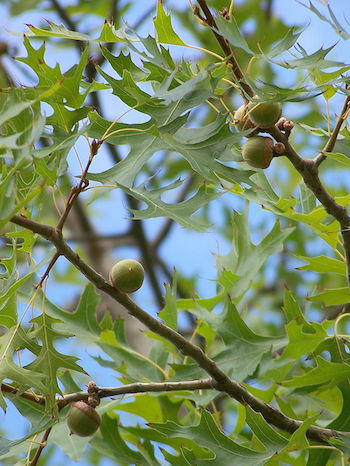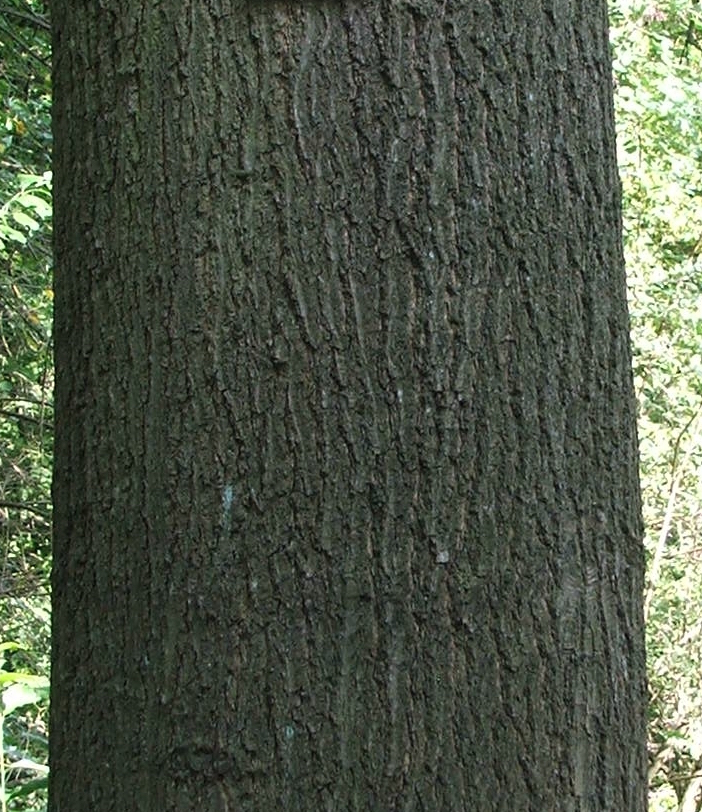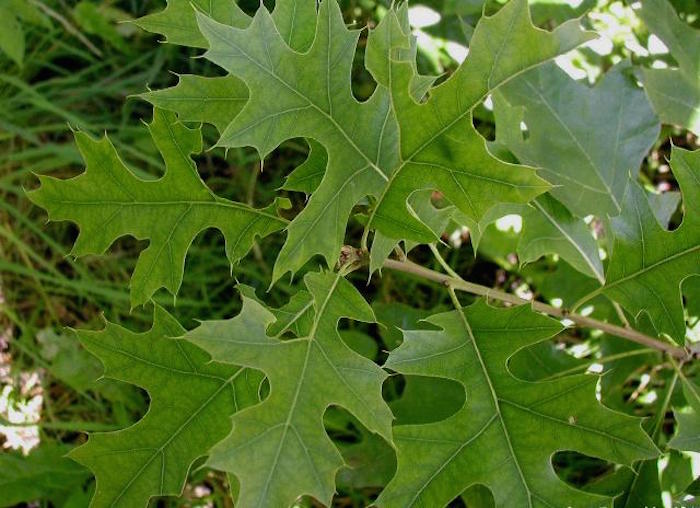
Description:
Pin oak is one of the most commonly planted oaks in the Eastern United States, but is more rare in Minnesota. Leaves are 3-5” long with 5-7 pointed lobes with deep, C-shaped sinuses. The leaves are alternate, simple, and dark green, turning bright red in the fall. Flowers are unremarkable yellowish-green catkins, with female flowers developing into ½” wide acorns. The bark is smooth, grayish brown, and develops ridges with age.
Photo Credit: Public Domain CC by SA 3.0
Pin oak is primarily used for wood pulp, railroad ties, and fuel. Its longevity and adaptability have made it a popular landscape plant in the East, though it is somewhat less common here in Minnesota. Pin oak is part of the Red Oak group, or the section of the Quercus genus known as Sect. Lobatae.
As of 2017, this particular pin oak is one of only three planted in the St. Paul campus of the University of Minnesota.
Issues:
Pin oaks thrive in marshy, wet areas, but prolonged flooding can kill the trees. The gypsy moth can also be a major problem when the trees are young, and pin oaks are otherwise susceptible to the common diseases of oak, including oak wilt.
Other Resources:
Photo Credit: Bruce Marlin CC by SA 2.5



